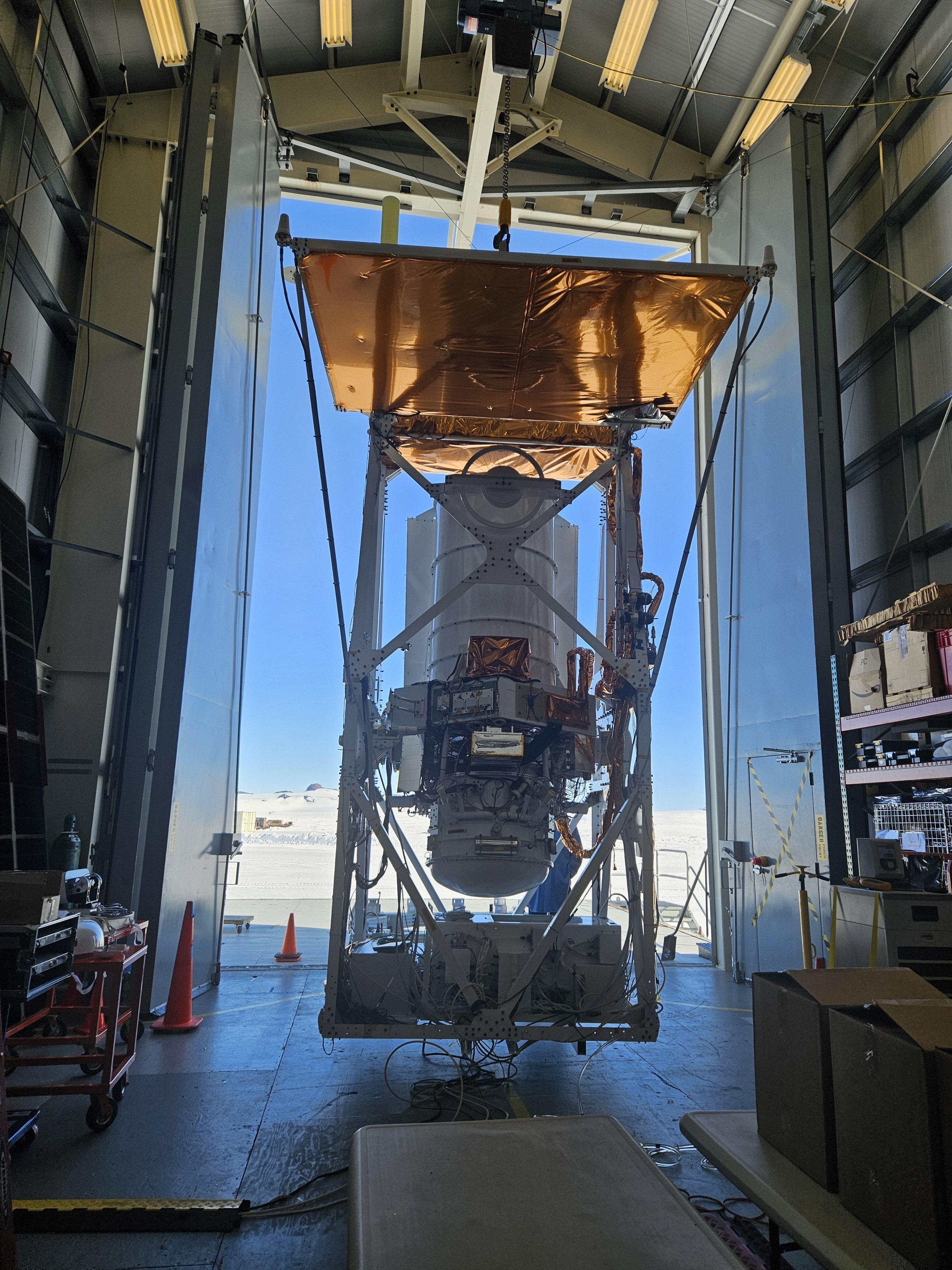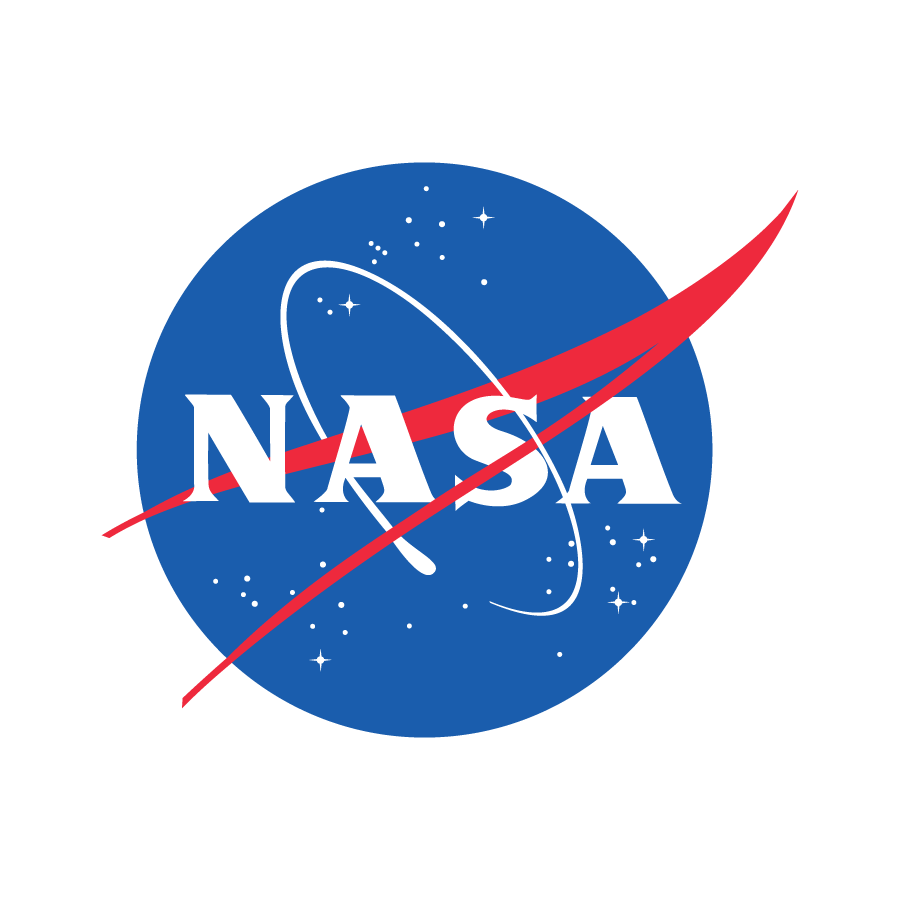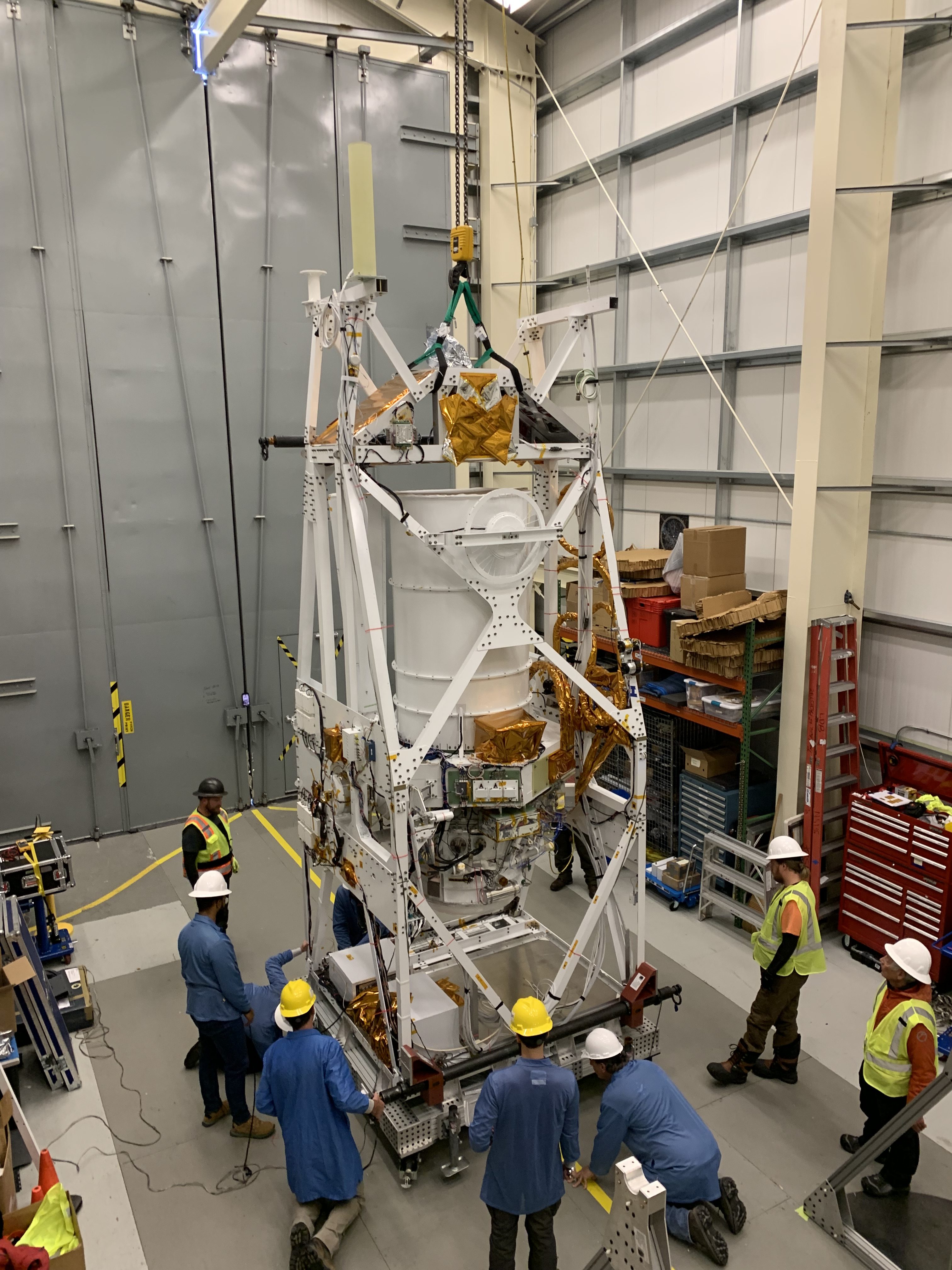7 min read

Editor's Note: The GUSTO mission successfully launched on a scientific balloon from Antarctica Dec. 31, 7:30 p.m. local time (Dec. 31, 1:30 a.m EST). The balloon is floating 128,000 feet above Earth’s surface and can be tracked in real-time on NASA's Columbia Scientific Balloon Facility website here.
On a vast ice sheet in Antarctica, scientists and engineers are preparing a NASA experiment called GUSTO to explore the universe on a balloon. GUSTO will launch from the Ross Ice Shelf, near the U.S. National Science Foundation’s McMurdo Station research base, no earlier than Dec. 21.
GUSTO, which stands for Galactic/Extragalactic ULDB Spectroscopic Terahertz Observatory, will peer into the space between stars called the interstellar medium. The balloon-borne telescope will help scientists make a 3D map of a large part of the Milky Way in extremely high-frequency radio waves. Examining a 100-square-degree area, GUSTO will explore the many phases of the interstellar medium and the abundances of key chemical elements in the galaxy.
By studying the LMC and comparing it to the Milky Way, we'll be able to understand how galaxies evolve from the early universe until now.

Chris Walker
GUSTO principal investigator
In particular, GUSTO will scan the interstellar medium for carbon, oxygen, and nitrogen because they are critical for life on Earth. These elements can also help scientists disentangle the complex web of processes that sculpt the interstellar medium.
While our galaxy brims with billions of stars, including our Sun, that are interesting in their own right, the space between them holds a wealth of clues about how stars and planets are born.
The interstellar medium is where diffuse, cold gas and dust accumulate into gigantic cosmic structures called molecular clouds, which, under the right conditions, can collapse to form new stars. From the swirling disk of material around the young star, planets can form.
GUSTO is unique in its ability to examine the first part of this process, “to understand how these clouds form in the first place,” Chris Walker, principal investigator of GUSTO at the University of Arizona, said. GUSTO is a collaboration between NASA, the University of Arizona, Johns Hopkins Applied Physics Laboratory (APL), and the Netherlands Institute for Space Research (SRON); as well as MIT, JPL, the Smithsonian Astrophysical Observatory, and others.

Eventually, when massive stars die and explode as supernovae, massive shock waves ripple through molecular clouds, which can in turn lead to more stars being born, or simply destroy the clouds. GUSTO can also look at this end stage of the molecular clouds.
GUSTO functions as a cosmic radio, equipped to “listen” for particular cosmic ingredients. That’s because it senses the high-frequency signals that atoms and molecules transmit. The “T” in GUSTO stands for “terahertz” – that’s about a thousand times higher than the frequencies that cellphones operate at.
“We basically have this radio system that we built that we can turn the knob and tune to the frequency of those lines,” Walker said. “And if we hear something, we know it's them. We know it's those atoms and molecules.”
As the telescope moves across the sky, scientists will use it to map the intensity and velocities of the signals from particular atoms and molecules at each position. “Then we can go back and connect the dots and create an image that looks like a photograph of what the emission looks like,” Walker said.
Observations like these can’t be done for carbon, nitrogen, and oxygen from Earth-based telescopes because of the water vapor in our atmosphere absorbing the light from the atoms and molecules in question, interfering with measurements. On a balloon about 120,000 feet above the ground, GUSTO will fly above most of that water vapor. “For the type of science we do, it's as good as being in space,” Walker said.
The GUSTO telescope will also reveal the 3D structure of the Large Magellanic Cloud, or LMC, a dwarf galaxy near our Milky Way. The LMC resembles some of the galaxies of the early universe that NASA’s James Webb Space Telescope is exploring. But since the LMC is much closer than the distant early galaxies, scientists can examine it in greater detail with GUSTO.
“By studying the LMC and comparing it to the Milky Way, we'll be able to understand how galaxies evolve from the early universe until now,” Walker explained.
GUSTO is expected to fly for at least 55 days on a 39 million cubic-foot zero-pressure balloon, a type of balloon that can fly high for long periods of time in the Austral Summer over Antarctica and has the diameter of a football field as it floats.

Antarctica provides an ideal launch location for GUSTO. During the southern hemisphere’s summer, the continent gets constant sunlight, so a scientific balloon can be extra stable there. Plus, the atmospheric zone around the South Pole generates cold rotating air – creating a phenomenon called an anticyclone, which enables balloons to fly in circles without disturbance.
“Missions will fly in circles around the South Pole for days or weeks at a time, which is really valuable to the science community,” said Andrew Hamilton, chief of the NASA Balloon Program Office at the Wallops Flight Facility in Virginia. “The longer they have for observation, the more science they can get.
GUSTO is the first balloon-borne experiment in NASA’s Explorer program. It has the same scientific reach as the program’s space-borne satellites, such as TESS (the Transiting Exoplanet Survey Satellite) and IXPE (Imaging X-Ray Polarimetry Explorer).
“With GUSTO, we’re really trying to trailblaze,” said Kieran Hegarty, Program Manager for GUSTO at APL. “We want to show that balloon investigations do return compelling science.”
A total of twelve mission team members from University of Arizona and APL are on site in Antarctica performing the final checks before GUSTO’s launch.
With seals and penguins nearby, Walker and colleagues are hard at work readying this experiment for its ultimate adventure in the sky. For Walker, GUSTO represents some 30 years of effort, the outgrowth of many experiments from Earth-based telescopes and other balloon efforts.
“We all feel very fortunate and privileged to do a mission like this – to have the opportunity to put together the world's most advanced terahertz instrument ever created, and then drag it halfway around the world and then launch it,” he said. “It’s a challenge, but we feel honored and humbled to be in the position to do it.”
About the Mission
In March 2017, NASA Astrophysics Division selected the Explorer Mission of Opportunity GUSTO (Galactic/Extragalactic ULDB Spectroscopic Terahertz Observatory) to measure emissions from the interstellar medium to help scientists determine the life cycle of interstellar gas by surveying a large region of our Milky Way galaxy and the Large Magellanic Cloud. The GUSTO mission is led by Principal Investigator Christopher Walker from the University of Arizona in Tucson. The team also includes the Johns Hopkins University Applied Physics Laboratory in Laurel, Maryland, which provided the balloon platform to mount the instrumentation, known as the gondola, and the GUSTO project management. The University of Arizona provided the GUSTO telescope and the focal plane instrument, which incorporates detector technologies from NASA’s Jet Propulsion Laboratory in Pasadena, California, the Massachusetts Institute of Technology in Cambridge, Arizona State University in Tempe, and SRON Netherlands Institute for Space Research.
Media Contacts
By Elizabeth Landau
Headquarters, Washington
202-358-0845
elizabeth.r.landau@nasa.gov
Alise Fisher
Headquarters, Washington
202-358-2546
alise.m.fisher@nasa.gov



